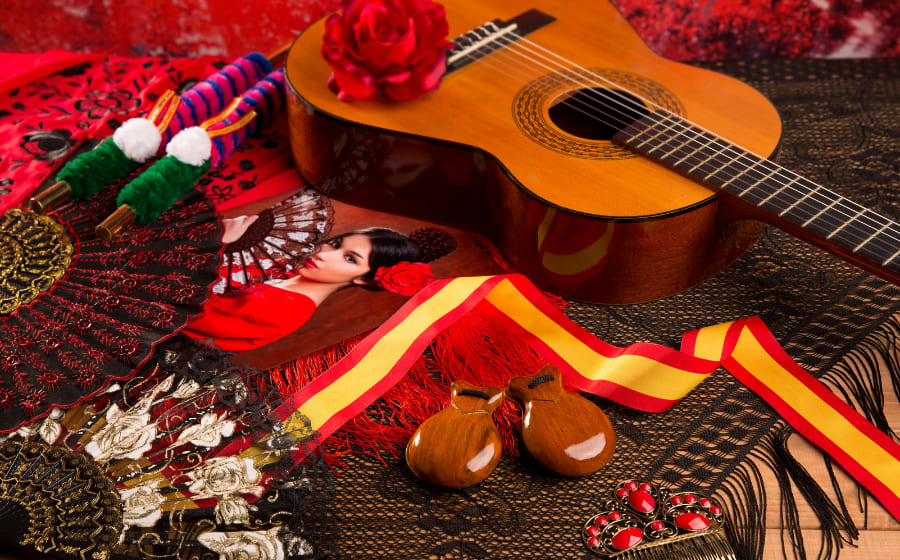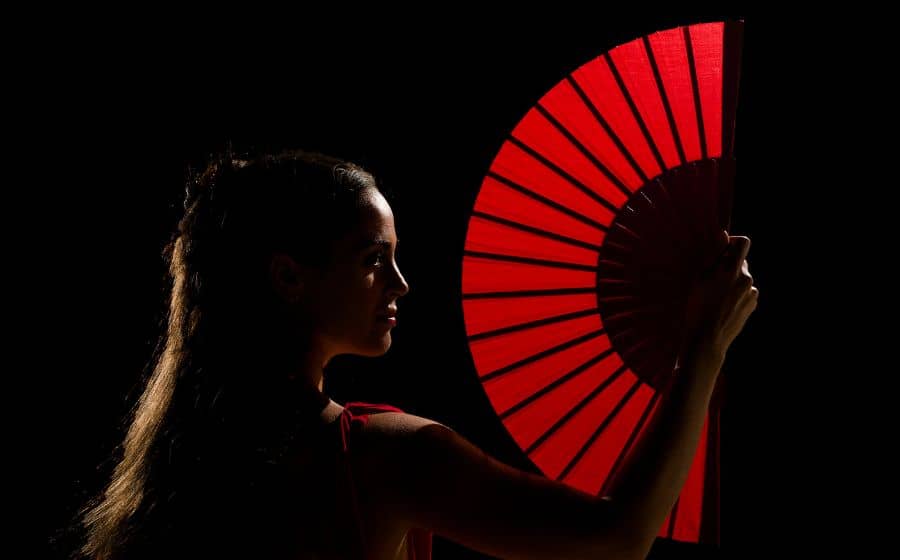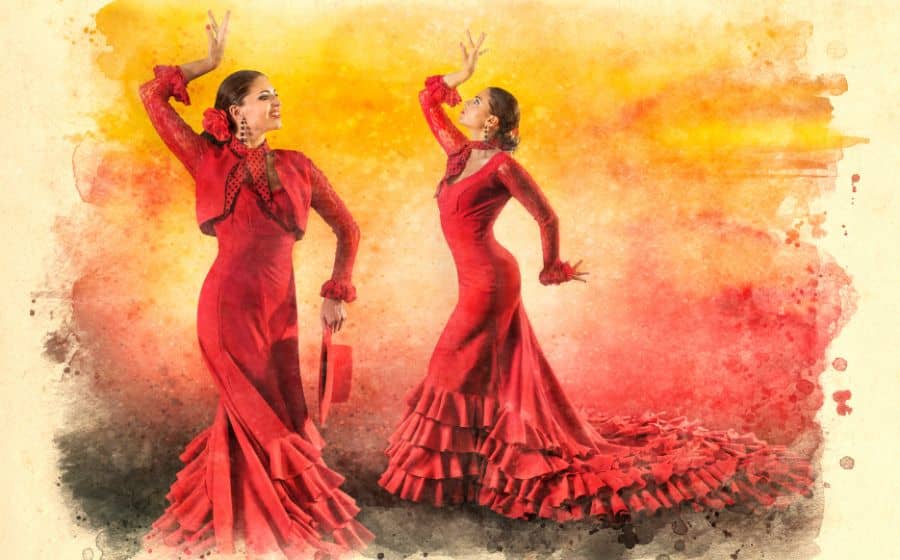9 Curious Flamenco Facts That Will Totally Surprise You
November 4, 2022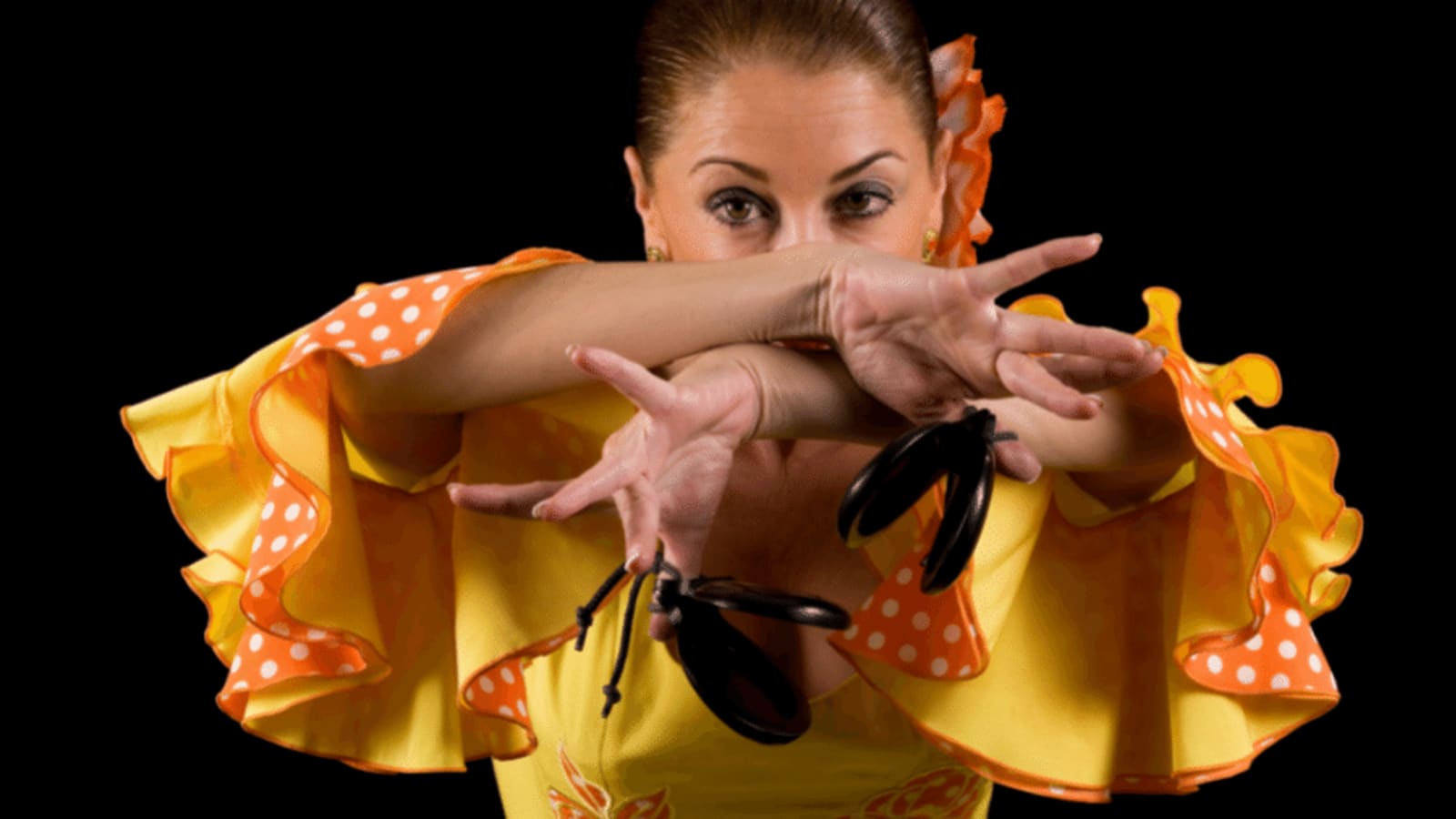
Win a FREE Trip to Spain!
Exciting Announcement! For the first time, we're thrilled to offer exclusive trips to the heart of Spain - an experience like no other. This isn't your typical tourist journey; it's a unique opportunity to immerse yourself in authentic Spanish culture, alongside real locals and our passionate team.
But there's more! Simply by requesting information about this amazing trip, you'll be entered into a special draw to win a Fully Paid Trip to Spain for Two. And that's not all - everyone who inquires will receive an exclusive bonus gift, valued at $500, available only now.
Ready to Discover the Real Spain?Click Here ↑ to Request Information & Enter the Draw!
Flamenco is a musical and cultural tradition and one of Spain’s most representative art forms. It’s also part of UNESCO’s list of Intangible Cultural Heritage! Did you know that?
In addition to singing, this art of Andalusian origin also integrates dance and playing an instrument such as the flamenco guitar or the unique “cajon.” Flamenco is known for the great emotional intensity and feelings the artist transmits to his audience. The energetic movements of the arms, the unmistakable stamping of the feet, the sound of the clapping, and the crazy “jaleo” of the crowd are an essential part of any flamenco show.
Flamenco can even be seen as a sign of identity for some communities, such as the gypsy ethnic group. It’s an art passed down from generation to generation through family, festivals, schools, or flamenco “tablaos.” As you probably know, Flamenco plays a significant role in our culture and will continue to do so for a long time.
So, are you ready to learn more about it and discover some of the most curious facts about this musical style? I hope to surprise you!

Table of Contents ▼ ▶
1. The Origin of Flamenco Is Still A Mystery
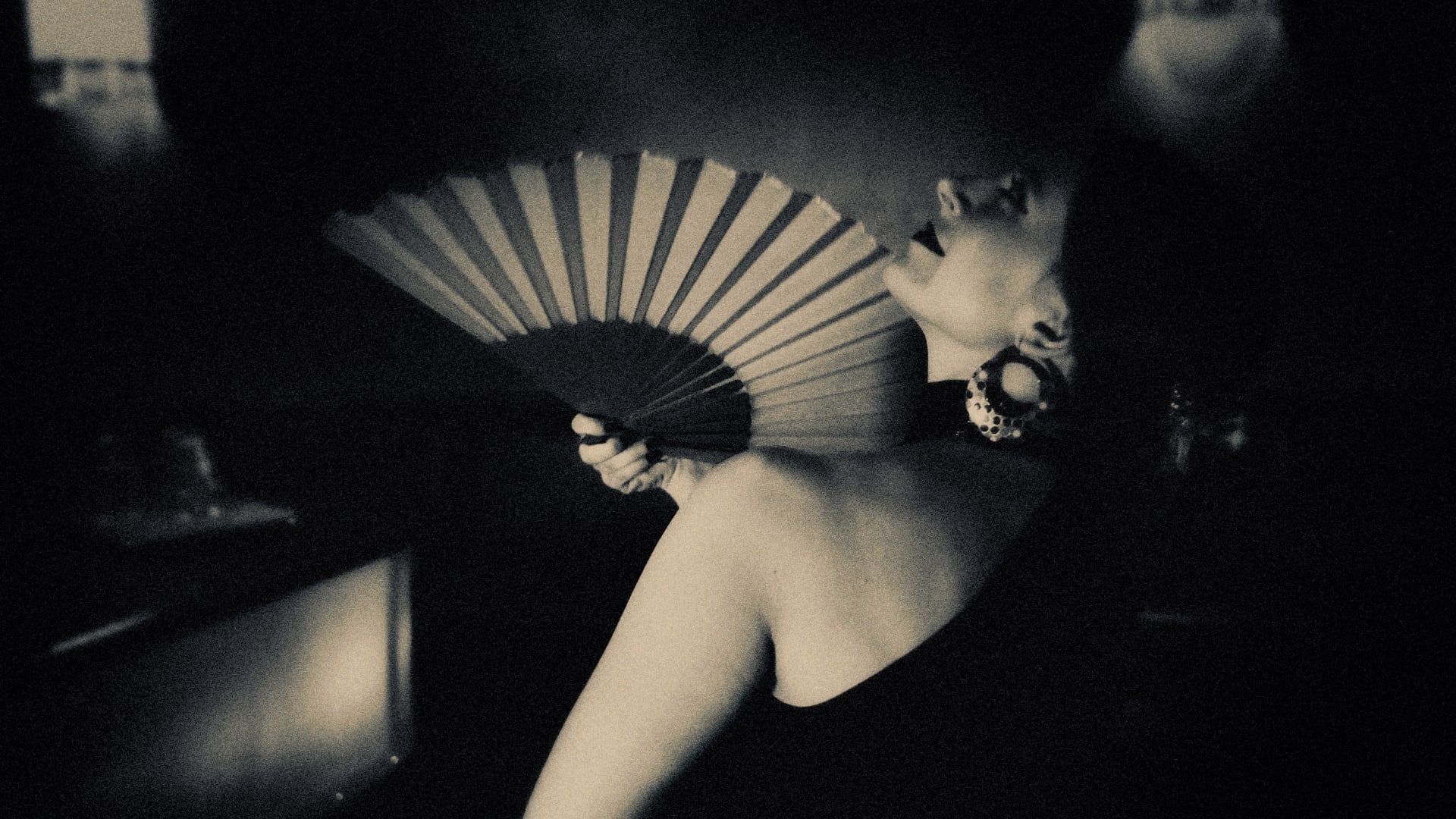
It’s confirmed that flamenco as we know it dates back to the 18th century. However, the exact roots are unclear, which remains a mystery to be discovered! There are many different theories about how it was born, as it has some musical aspects and dance movements from previous generations.
The most widely shared belief is that flamenco originated in Andalucia. More specifically, it’s said to have arisen from the mixture of Christian, Jewish, Indian and Islamic cultures living side by side. Something I find surprising and beautiful at the same time! Don’t you think?
There are also essential contributions from Latin America (especially Cuba) that shaped some of the musical forms of Spanish flamenco.
In fact, many regions have contributed to the evolution of flamenco, such as Andalusia, Murcia, Extremadura, and, of course, Barcelona. They have contributed to developing this musical art and have been involved in the performances of great flamenco artists. Barcelona was actually one of the first centers of flamenco in Spain between the 19th and 20th centuries.
If you want to know more about the history of flamenco and its origin, I recommend you take a look at this post:
2. Why Is Flamenco Called Flamenco?
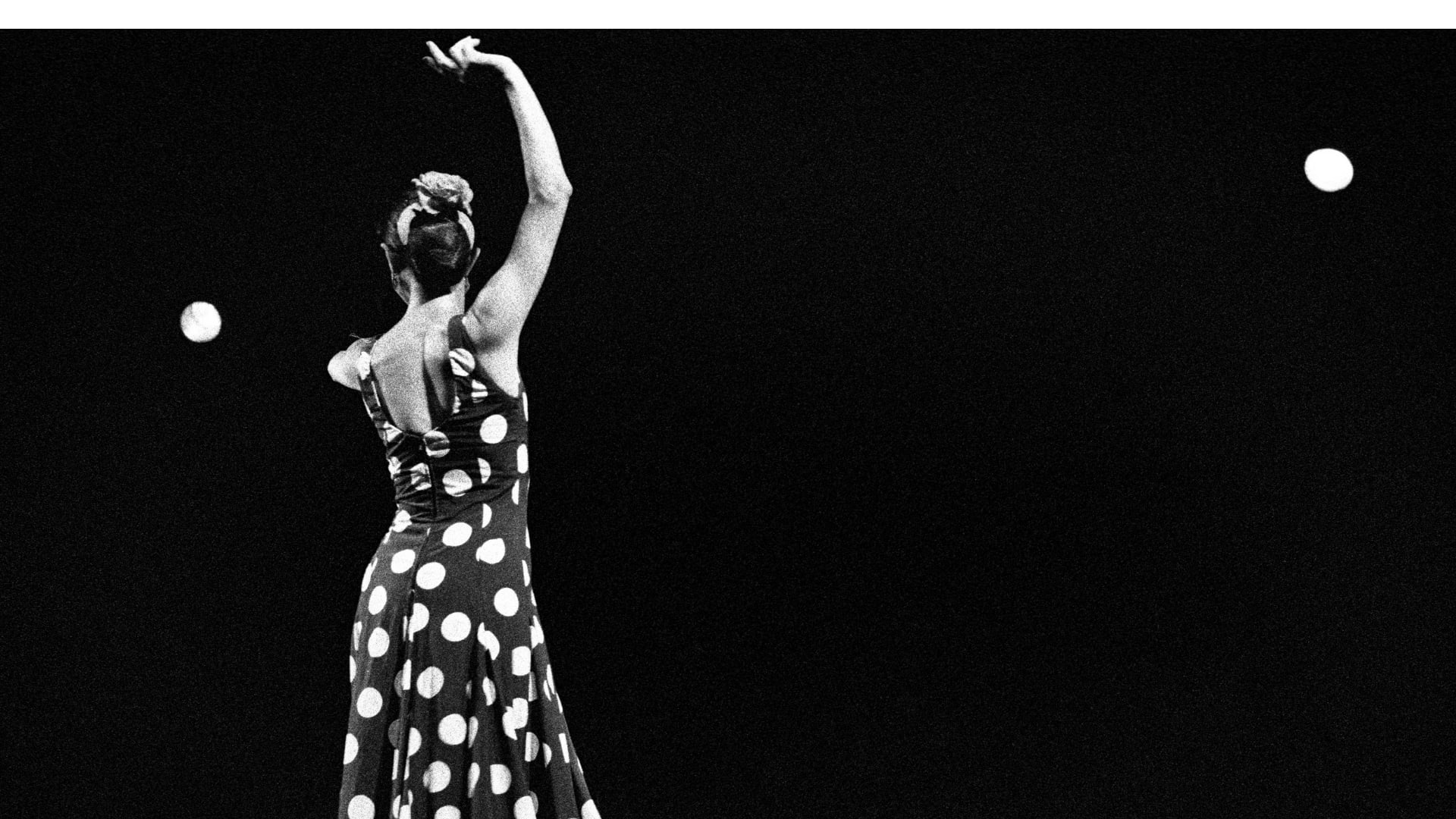
The truth is that there are many theories, and no one is officially accepted as the correct one.
But here I share with you the ones that have turned out to be the most curious and shocking:
- The best known is the one from the book “Origins of Flamenco " by Blas Infante, known as the Father of the Andalusian Homeland. It says that the word “flamenco” comes from the Arabic term “Felah-Mengus,” which means “wandering peasant.”
- Apparently, “Flamenco” means “original from Flanders.” Over time, the singer who stood out for his beautiful voice in the Netherlands during the 16th century and performed in the chapels of the Spanish cathedrals was called flamenco. It was later that the singing itself was called flamenco.
- Another theory is that the first flamenco artists were reminiscent of the pink-furred birds of the same name (Flamingo). Maybe because the singers wore short jackets, were tall, and held a stiff poses? What do you think?
- A curious theory is that flamenco was named after a knife or razor. But this hypothesis has not become very important.
- One hypothesis that has caught my attention is the one from Antonio Machado, who said that the gypsies used to call the Andalusians “gachós” and the Andalusians called the gypsies “flamencos.” Although it is not known why they were called that way.
- One of the first studies on flamenco tells that in the 18th century, the gypsies, who were and are the leading creators of this musical genre, were known in Andalusia as “flamencos.” Hence another theory of where the word flamenco may come from.
Which one do you believe the most?
3. Singing Is The KEY Element of Flamenco
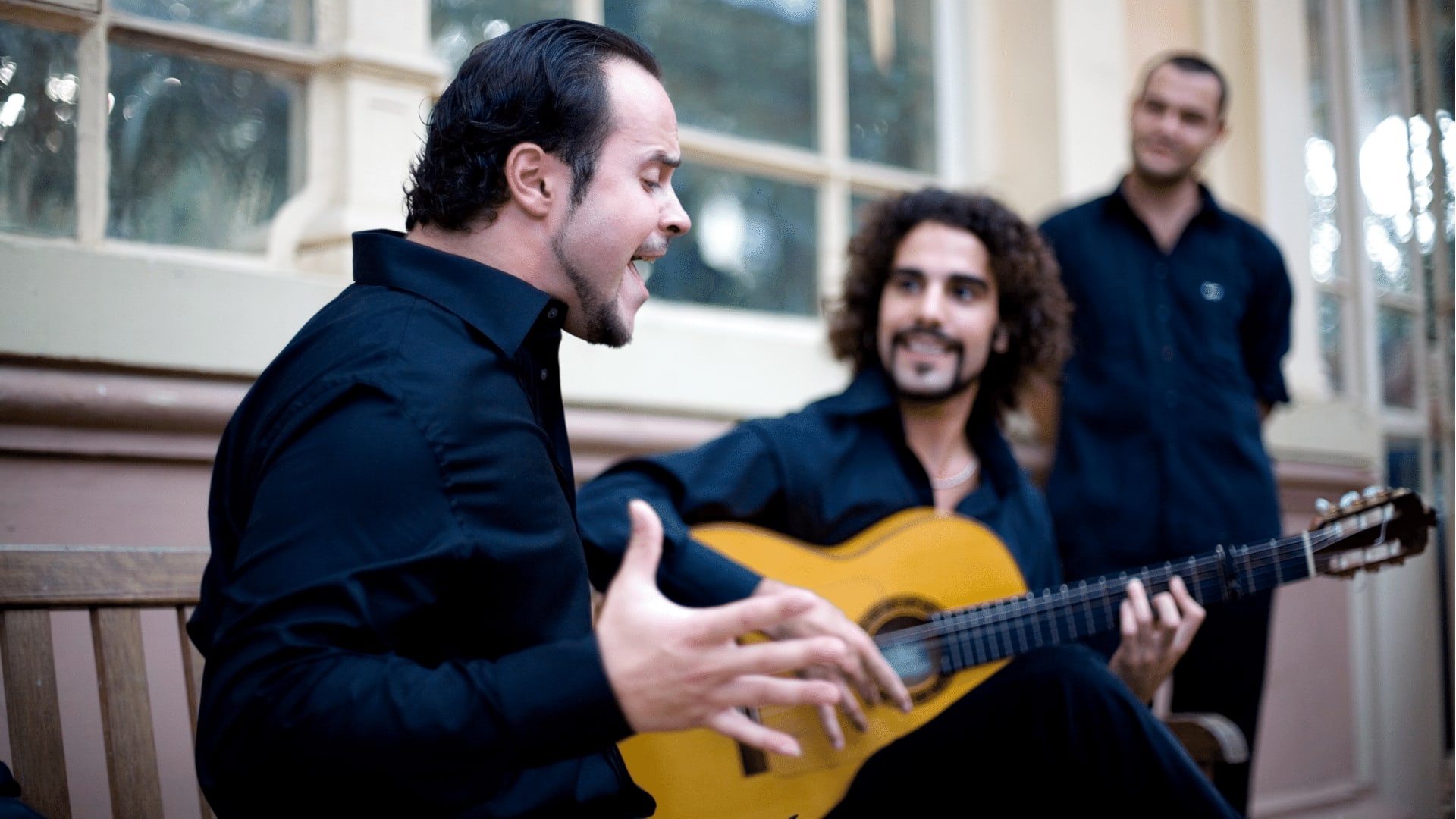
This may surprise you, but singing, known as “el cante” in Spanish, is the most crucial element of flamenco music. In fact, the original flamenco was only composed of singing and clapping as accompaniment.
The songs stand out for being very passionate, emotional, and deep. Most of the time, flamenco artists improvise and combine the snapping of their fingers with the sound of their feet tapping, or they clap their hands to the rhythm of the artist’s voice.
In the 19th century was when the flamenco guitar was introduced as an instrument to accompany singing.
Suppose you want to know more about this spectacular and unique instrument typical of Spanish culture and its differences from the Spanish guitar. In that case, I recommend you to read the following article:
The One and Only Spanish Guitar: Its Beautiful and Different Sound
4. 5 Unique Flamenco Instruments
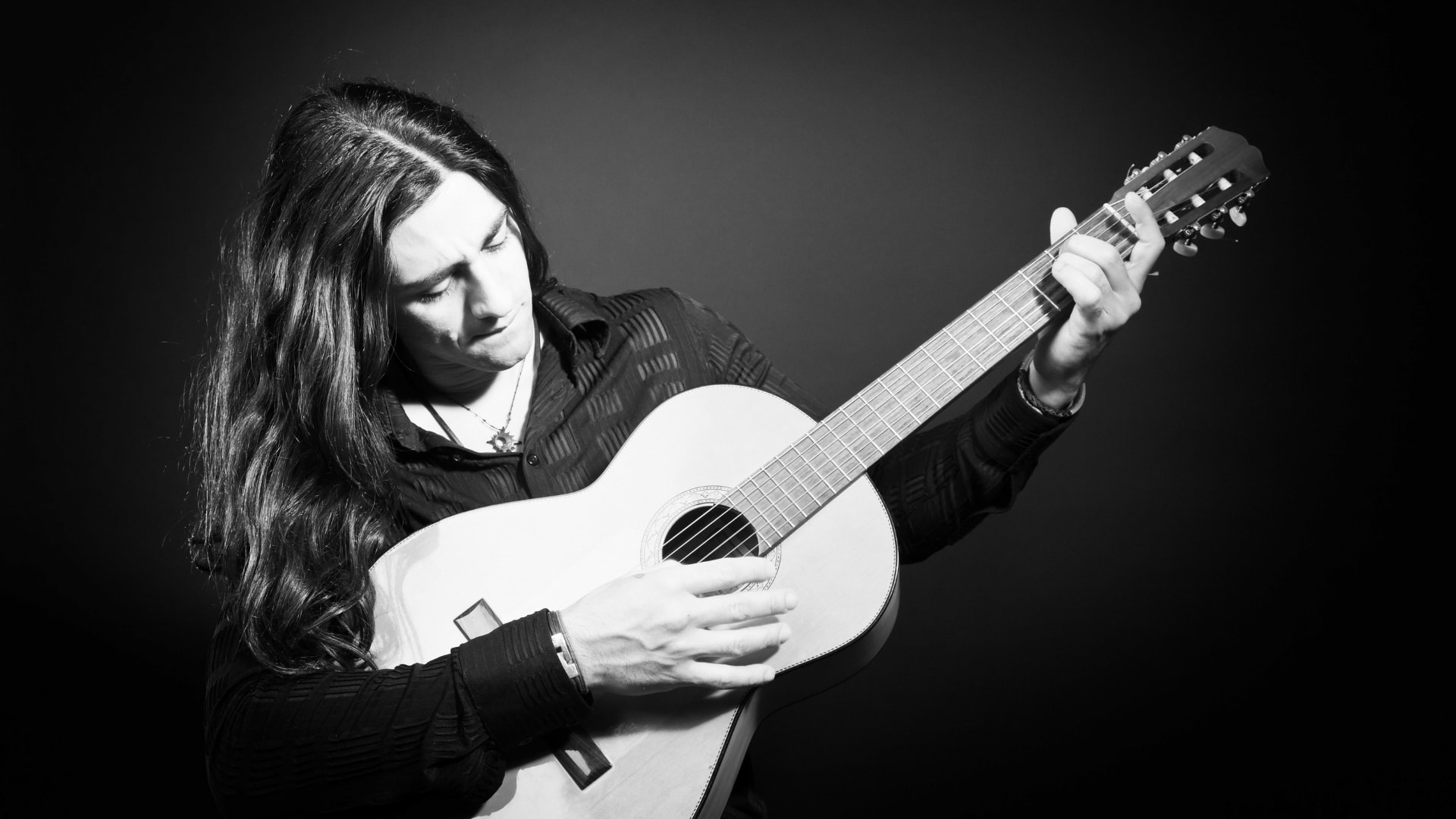
Flamenco has 5 instruments that make this art even more special and unique.
These instruments are the flamenco guitar, the “palmas,” the “cajón,” the castanets and the “zapateado.” However, two of them are not musical instruments but have been classified as such because their sound is key to flamenco. Can you tell me what they are?
I’m going to tell you a little bit about each one to see if you can find out:
- The flamenco guitar: it was the second musical element to accompany the singing known as “el cante,” after the “palmas” (clapping) and the one that undoubtedly revolutionized flamenco.
- The “cajón”: gives flamenco a special touch and rhythm. The position to play it is sitting on top of it. We owe its incorporation to our beloved flamenco artist Paco de Lucía.
- The Castanets: they are also known as “palillos.” They have a very particular sound. One castanet is put in each hand to play; they seem to be the same, but each sounds different. This instrument, mainly made of wood, is part of the cultural heritage of Spain.
- The “palmas”: they were the first element to accompany the “cante” (singing). There are two types of palmas, the “palmas sordas” and the “palmas abiertas.” They are used to mark the rhythm and to animate the flamenco artist.
- The “zapateado”: the sound is born from the blow of the shoe against the floor. The way to make the sound is by combining the heel-toe in each movement. It’s an essential of flamenco that is presented in every show.
If you want to know more about each of the instruments, I recommend you take a look at this post:
5. Flamenco Costumes Derived from Gypsies
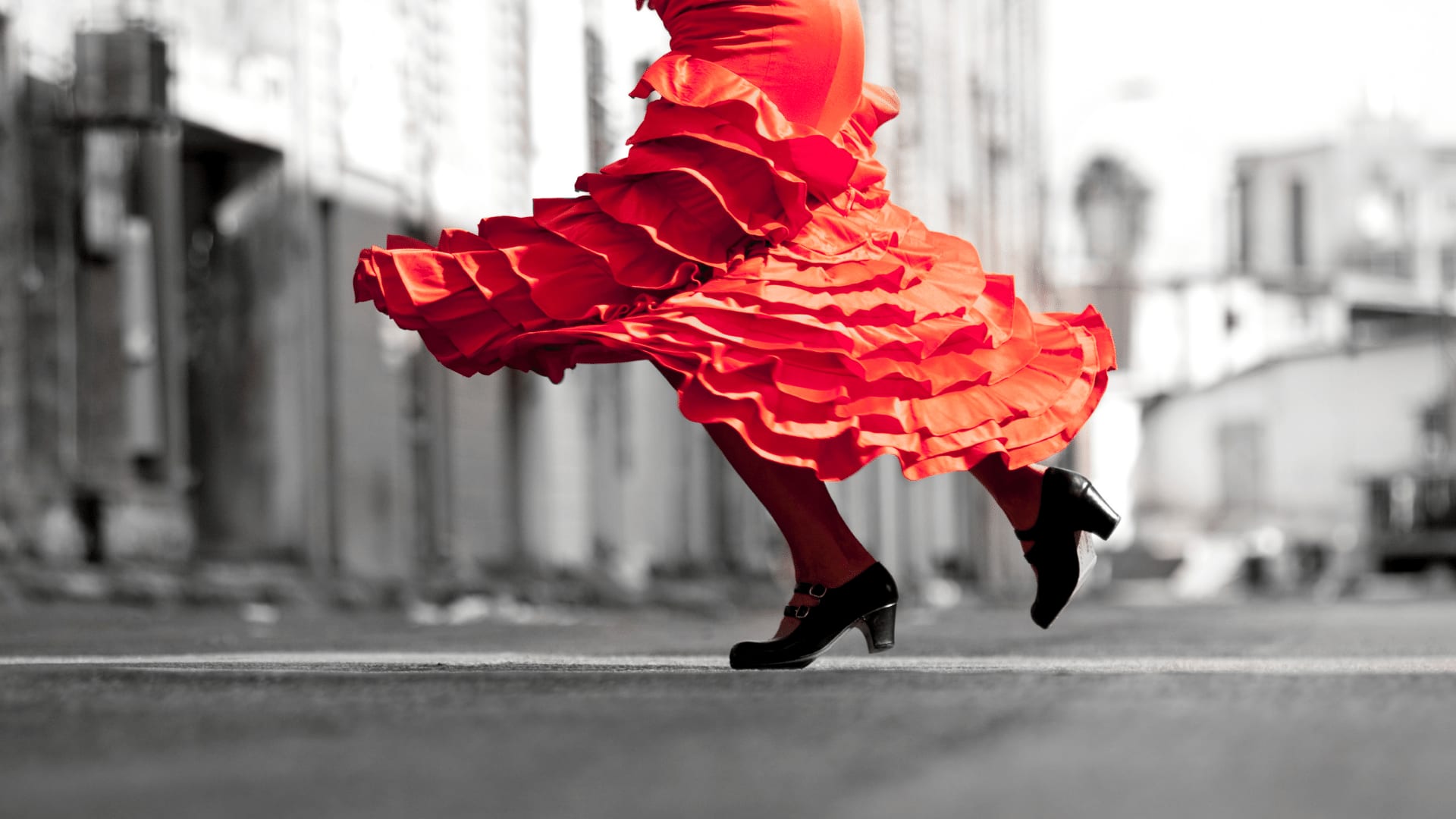
Did you know the current flamenco dresses come from the Spanish gypsies of the 19th and 20th centuries? That’s why it is also called a gypsy costume, known as “Traje de gitana” in Spanish.
At that time, gypsy women from Andalusia wore this dress for work in the fields and also for cattle fairs. They were dressed in very comfortable and fresh and ruffled gowns, perfect for such tasks.
It’s curious, but little by little, this style of ruffled gowns with embroidery and colors began to attract the attention of the ladies of the high society of that time. That’s how it all started, and it was in 1847 when the flamenco dress became very popular.
In that year, on the occasion of the April Fair held in Seville (what we know today as the “Feria de Sevilla”), many women, especially of gypsy ethnicity, used these peculiar outfits to show off at the event. But what began as a livestock fair eventually became a meeting for partying and leisure. So these ruffled gowns of humble origin became an object of great attraction for the ladies of high society, becoming the “official” costume to attend the fair, and finally becoming the official costume for flamenco dancers.
This typical costume of our culture has come to cross borders. Nowadays, it’s an icon of Spanish fashion that has been evolving and adapting to the times without losing its origin.
If you want to find out more about the flamenco dress, how exactly it looks like, the accessories that go with it, on which occasions it is worn, and much more, click on the following link:
6. Duende’s Meaning in Flamenco
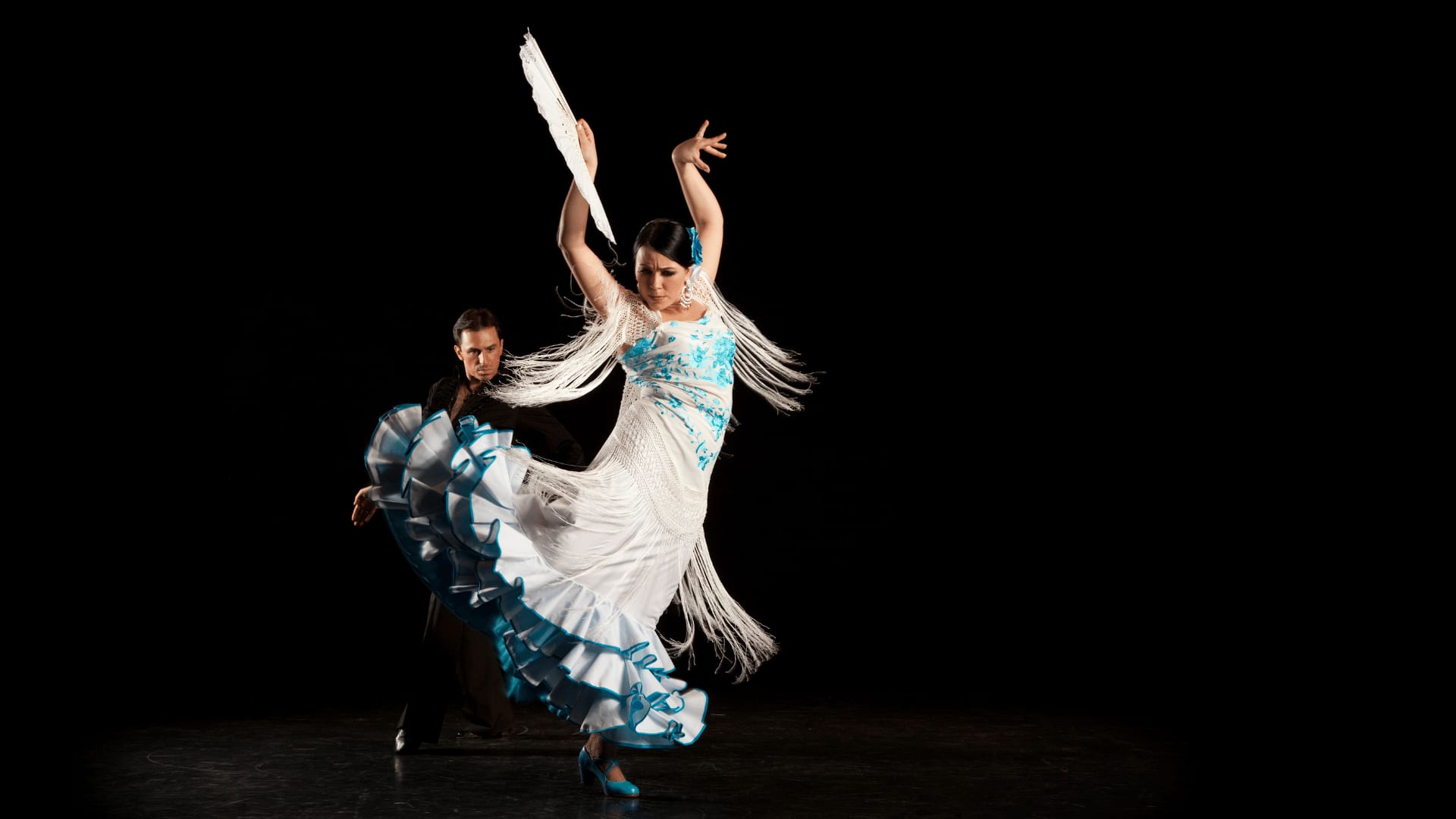
The “Duende flamenco,” which in English would be translated as “elf flamenco,” refers to that special gift that some artists belonging to this art have.
In fact, there is an expression known as “tener duende” (having “duende”) to refer to people who have this virtue.
It’s said that an artist has “duende” when he or she manages to generate a special magnetism or personality by dancing, singing, or playing an instrument. It refers to the art that arises naturally during a show; it’s the innate talent that some artists have.
The artists that have “duende” through their interpretation significantly impact the spectators’ emotions since they put all their passion and soul on stage and manage to create pure art.
7. The 4 Basic Elements of Flamenco

Did you know that flamenco is composed of four essential elements? Here I am not referring to the instruments we have mentioned before but to the 4 things that must be included in any flamenco show.
The “cante”: as you know, singing is the key to flamenco. In fact, it was the singing that gave birth to this incredible art.
The dance: consists of the movements performed by the artist. The arms play a vital role.
The “toque”: refers to the playing of the guitar or one of the other instruments.
The “jaleo”: it’s a kind of call to encourage the artist and the people enjoying the show. You will hear people saying “OLE” or other words of encouragement, clapping, and sometimes even singing.
8. Flamenco Expresses The Deepest Feelings

Whether or not you have seen a flamenco show, you should know that what you experience is very intense!
The passion and art created in this environment are challenging to transmit if you do not see it in the first person.
Flamenco is an art where feelings such as love, pain, anguish, despair, or even joy are transmitted in every movement, expression, and even in the artist’s voice.
9. The Typical “Tablao” Flamenco

If you want to enjoy a live flamenco show, you cannot miss one of our “tablaos.” They are also known as Cathedrals of The Elf “Catedrales del Duende” in Spanish.
The “tablao” is the place where flamenco artists show their most passionate side and transmit it to the public. The atmosphere is indescribable and difficult to explain with words; you have to live it to feel it!
You can find “tablaos” in various corners of the world. Still, Spain has, without a doubt, the best and most authentic ones, especially the region of Andalucia, as it is a reference to this tradition.
When flamenco first emerged, flamenco performances were held at parties or private celebrations. Later, “cafés cantantes” (singing cafes) emerged. These were the first places where people went to see flamenco artists create live art.
These cafes were evolving, and it was in the mid-nineteenth century when they became more successful and received the name “tablaos.”
The role that the “tablao” has played in flamenco has been fundamental for the evolution and popularization of this art.
If you want to enjoy an authentic flamenco “tablao,” here are some of the best in Spain:
- Cuevas Los Tarantos, Sacramonte, Granada
- Tablao Flamenco La Cava, Cádiz
- Tablao Los Gallos, Sevilla
- Corral de la Morería, Madrid
- Tablao El Arenal, Sevilla
- Cardamomo, Madrid
Did you know all this about flamenco before reading this post? What did you find most curious?
I hope this information has made you discover much more about this fantastic art so prevalent in our culture.
Flamenco, as you have seen, goes far beyond a simple dance, and you will only know what I am talking about when you attend a live show!



